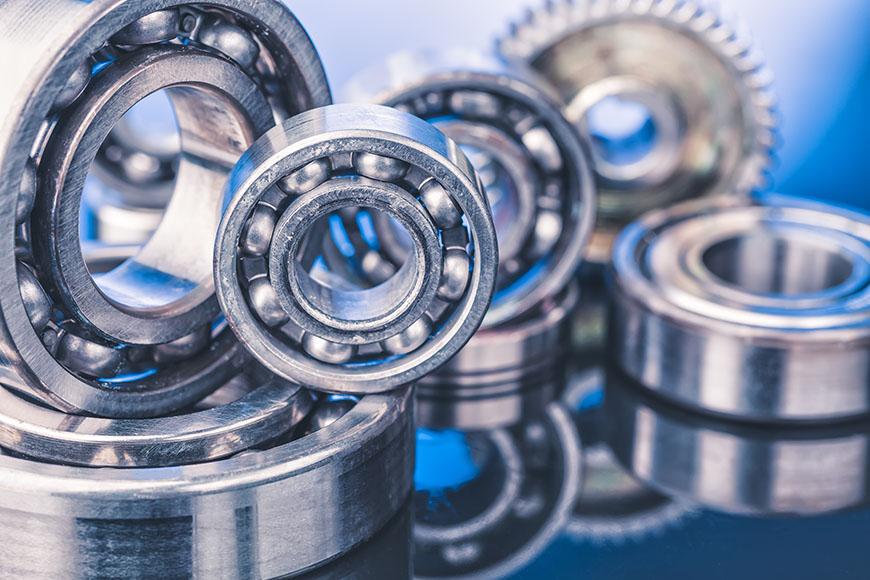Bearings are fundamental components in machinery and engineering, facilitating various mechanical systems' smooth rotation and movement. Choosing the right bearing for your application ensures optimal performance, longevity, and efficiency. With various bearing types and options, selecting the appropriate one can be challenging. In this article, we will provide tips to guide you in choosing the right bearing for your specific needs.
Identify Your Load Type
The first step in selecting the right bearing is identifying the load it will encounter in its intended application. Bearings experience various loads, including radial, axial, or combination. Radial loads act perpendicularly to the axis of rotation, while axial loads are parallel to the axis. Some applications may involve both radial and axial loads. You can determine the appropriate bearing by understanding the predominant load type, such as choosing deep groove ball bearings for primarily radial loads and thrust bearings for predominantly axial loads. This initial step ensures the bearing's optimal performance and longevity.
Consider Speed And Operating Conditions
The operating speed and environmental conditions in which the bearing will be used play a significant role in special bearings selection. Different bearings are designed to operate at varying speeds, and choosing the wrong bearing for a specific speed can lead to overheating, premature wear, and reduced lifespan. In addition to speed, consider the operating conditions, such as humidity, temperature, and exposure to corrosive substances. Bearings designed for extreme conditions, such as high-temperature environments, may require special materials, like ceramic or stainless steel, to maintain efficiency and longevity.
Choose the Right Bearing Material
Selecting the appropriate industrial bearings material is a critical aspect of bearing choice. The most common bearing materials are steel, ceramic, and plastic. Steel bearings are valued for their durability and cost-effectiveness, making them suitable for general applications. Ceramic bearings offer excellent resistance to corrosion and high temperatures, making them ideal for high-performance environments. Plastic bearings, on the other hand, are preferred in applications requiring corrosion resistance and non-metallic properties. Collaborating with a trusted bearings distributor ensures that your choice aligns with the specific demands of your application, guaranteeing optimal performance and longevity.
Determine Lubrication and Maintenance Needs
Lubrication is essential for bearing longevity and smooth operation. Different types of bearings require various lubrication methods. Some bearings are self-lubricating, containing built-in lubrication reservoirs, while others need external lubrication with grease or oil. Consider the maintenance requirements of your bearing choice. Some applications, especially those located in remote or hard-to-reach areas, may benefit from low-maintenance or self-lubricating bearings to reduce the need for frequent attention. When choosing a bearing for a linear motion system, it's vital to consider the maintenance requirements. Linear motion systems in remote or hard-to-reach areas may greatly benefit from low-maintenance or self-lubricating bearings, reducing the need for frequent attention and ensuring seamless and reliable linear motion performance. Assess your maintenance capabilities and frequency to choose the appropriate bearing type.
Determine Bearing Size and Configuration
Selecting the right bearing size and configuration is crucial to ensure it fits and functions correctly within your application. Bearings come in various sizes and shapes, including ball bearings, roller bearings, and needle bearings. You must determine the size and configuration that best aligns with your equipment's specifications. You can also opt for the RBC bearings that offer a range of size and configuration options to cater to diverse applications. The load-carrying capacity of the bearing, its speed capabilities, and the available space for installation are all factors that influence the choice of bearing size and configuration. Additionally, consider whether a single bearing or multiple bearings arranged in pairs or sets are needed to accommodate the load and provide stability.
Budget Considerations
While it is essential to prioritize performance and functionality, budget considerations should not be overlooked. Bearings come in various price ranges, and it's crucial to determine how much you are willing to invest in a bearing without compromising quality. High-quality timken bearings may come with a higher price tag but can provide superior performance and a longer service life. Evaluate your budget and find the right balance between performance and cost. Investing in a better-quality bearing can lead to long-term savings by reducing maintenance and replacement costs.
Do not forget to check Sri Krishna Enterprises which is a market leader in the distribution of Genuine Bearings and Industrial products.
